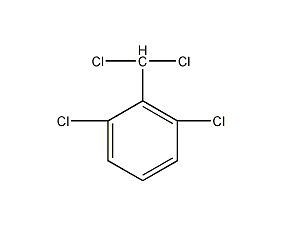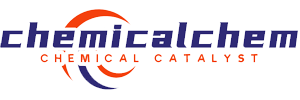
structural formula
| business number | 01rw |
|---|---|
| molecular formula | c7h4cl4 |
| molecular weight | 229 |
| label |
none |
numbering system
cas number:81-19-6
mdl number:mfcd00016349
einecs number:201-332-0
rtecs number:none
brn number:908809
pubchem number:24861778
physical property data
1. characteristics: colorless liquid.
2. density ( g/ml,25/4℃): unsure
3. relative vapor density (g/ml,air=1): unsure
4. melting point (ºc): unsure
5. boiling point (ºc,normal pressure): unsure
6. boiling point (ºc,5.2kpa):132-136℃(1.6kpa), 140-142 ℃ (2.13kpa)
7. refractive index: uncertain
8. flash point (ºc): unsure
9. specific optical rotation (º): unsure
10. autoignition point or ignition temperature (ºc): unsure
11. vapor pressure (kpa,25ºc): unsure
12. saturated vapor pressure (kpa,60ºc):�margin-top-alt: auto; mso-margin-bottom-alt: auto” align=left>4. surface tension (dyne/cm):42.6
5. polarizability(10-24cm3):20.08
compute chemical data
1. reference value for hydrophobic parameter calculation (xlogp): 4.3
2. number of hydrogen bond donors: 0
3. number of hydrogen bond acceptors: 0
4. number of rotatable chemical bonds: 1
5. number of tautomers: none
6. topological molecule polar surface area 0
7. number of heavy atoms: 11
8. surface charge: 0
9. complexity: 116
10. number of isotope atoms: 0
11. determine the number of atomic stereocenters: 0
12. uncertain number of atomic stereocenters: 0
13. determine the number of chemical bond stereocenters: 0
14. number of uncertain chemical bond stereocenters: 0
15. number of covalent bond units: 1
properties and stability
none yet
storage method
this product should be stored in a sealed, cool, dark, dry place away from light.
synthesis method
the preparation method is 2,6-chlorination of dichlorotoluene yields 2,6-dichloro–dichlorobenzyl.
xianxiang 2,6-add thionyl chloride to dichlorotoluene, and use phosphorus trichloride as a catalyst , under ultraviolet irradiation at 200℃通 add chlorine gas, and then use alkali solution to absorb the remaining gas until the mass increases to reach the theoretical amount, and you will get 2, 6- dichloro– benzyl dichloride.
purpose
2,6-dichloro–dichlorobenzyl also known as 2,6-二 chlorobenzylidene dichloride, an important intermediate for the synthesis of benzoyl urea pesticides 2,6-dichlorobenzaldehyde or 2,6-二 chlorobenzaldehyde oxime is also an intermediate of the antibiotic diclofenac and penicillin.
an> 2,6-add thionyl chloride to dichlorotoluene, and add phosphorus trichloride as a catalyst, under ultraviolet irradiation at 200 ℃, and then use alkali to absorb the remaining gas until the mass increase reaches the theoretical amount, that is, 2,6-dichloro–dichlorobenzyl.
purpose
2,6-dichloro–dichlorobenzyl also known as 2,6-二 chlorobenzylidene dichloride, an important intermediate for the synthesis of benzoyl urea pesticides 2,6-dichlorobenzaldehyde or 2,6-二 chlorobenzaldehyde oxime is also an intermediate of the antibiotic diclofenac and penicillin.

 微信扫一扫打赏
微信扫一扫打赏

